2019 edit: This was reposted on the eve of last year’s Golden Globes. Good luck to Caitriona Balfe and everyone at Outlander. The Golden Globes air Sunday, January 6, 2019 at 8ET/5PT.
Season Three of Outlander ended scarcely a month ago and I’m already enduring the emotional withdrawal that comes during “Droughtlander.” Like many fans, I’ve been easing the symptoms with repeat viewings of all three seasons, always picking up on something I missed the first few times. What really struck me this week, however, is that not only do I miss the show, I especially miss Claire.
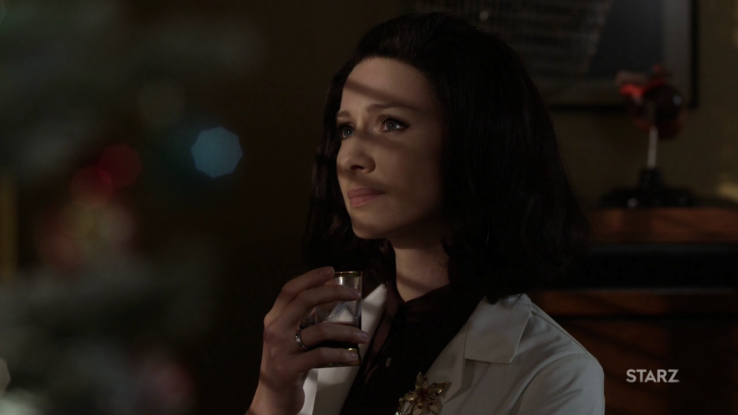
We are still too close to 2017 to fully understand its place in history with regard to gender equality, but we can surmise that we are currently experiencing a watershed moment for women’s rights. As Hollywood prepares for the Golden Globes tonight (January 7, 6pm EST on NBC), for which Caitriona Balfe is nominated for Best Actress in a Televisions Series-Drama, there is much discussion about the new dynamic in the industry as women finally say “enough.”
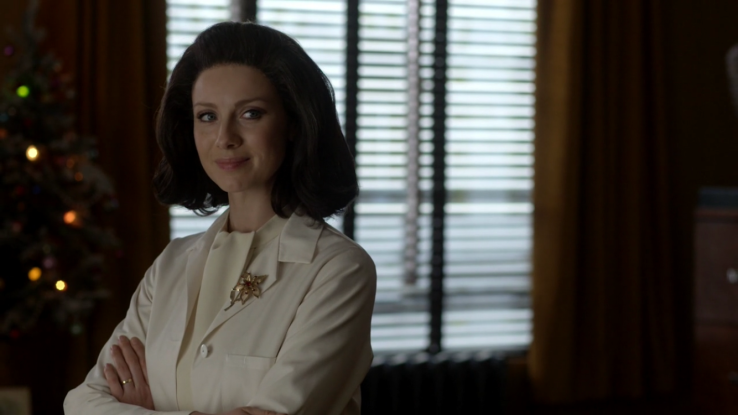
I think (and hope) we can expect this shift to translate into different, more authentic roles for women onscreen. Hollywood would be wise to take some cues from Outlander— because Claire defies many fictionalized female archetypes, Outlander is already (and always has been) ahead of the game.

Claire Fraser is what the industry should strive for in terms of female roles. We need to see more characters like Claire in entertainment: independent, complex, mature women. And, if we turn the page in this regard, perhaps we can also have an official end to the Manic Pixie Dream Girl and Cool Girl archetypes.
——————
If you’re not familiar with the term “manic pixie dream girl (MPDG),” coined by critic Nathan Rabin, you’re almost certainly acquainted with the trope: a woman, almost always young and certainly beautiful, is an energetic enigma of quirkiness. Her beauty renders her eccentricity as endearing and adorable (instead of annoying), causing a typically male protagonist to fall for her zany charms.
Usually a secondary character, the MPDG serves to teach life lessons through the lenses of adventure and a bubbly, effervescent personality. Think Kristin Dunst in Elizabethtown (the 2005 movie that actually inspired Rabin to coin the term), Kate Hudson in Almost Famous (2000), Natalie Portman in Garden State (2004), Zooey Deschanel in 500 Days of Summer (2009), or Cara Delevingne in Paper Towns (2015).
The Cool Girl ideal is similar but perhaps harder for us to accept as a trope since it’s been perpetuated on audiences for decades as the norm. Gillian Flynn provided the best definition of the archetype in her 2012 novel Gone Girl (later adapted into the 2014 film starring Ben Affleck and Rosamund Pike):
“Men always say that as the defining compliment, don’t they? She’s a cool girl. Being the Cool Girl means I am a hot, brilliant, funny woman who adores football, poker, dirty jokes, and burping, who plays video games, drinks beer…and jams hot dogs and hamburgers into her mouth…while somehow maintaining a size 2, because Cool Girls are above all hot. Hot and understanding. Cool Girls never get angry; they only smile in a chagrined, loving manner and let their men do whatever they want. Go ahead, shit on me, I don’t mind, I’m the Cool Girl.”
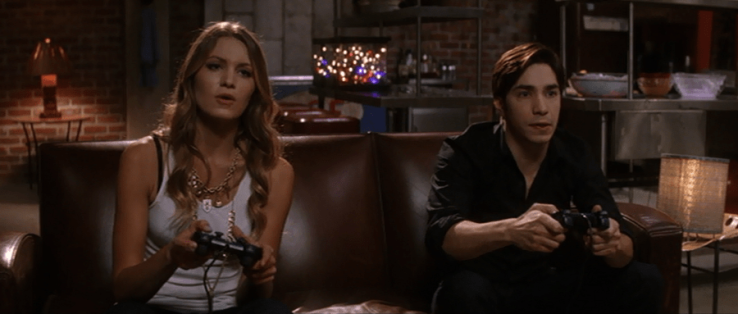
Cool Girls, as they are portrayed on film, act like one of the guys but are undoubtedly beautiful, thin women. They aren’t needy and they don’t nag. They love your friends and your friends love them in return. A Cool Girl is down to chill with whatever you want to do, which is usually some combination of eating and a stereotypical male activity— sports, video games, fishing, etc. Anne Helen Peterson wrote a brilliant piece about the history of the Cool Girl in 2014; the motif is not new and, as Peterson writes, arguably dates back to Clara Bow.
The Cool Girl is represented everywhere in film and television as a mythical embodiment of how women should be: Cameron Diaz in There’s Something About Mary (1998), Cobie Smulders in How I Met Your Mother (2005-2014), Mila Kunis in Forgetting Sarah Marshall (2008), or even Mia Sara in Ferris Bueller’s Day Off (1986) … the list goes on and on. We might not readily recognize or identify the cliche because the Cool Girl myth has been presented as an ideal for so long. We have been told over and over that this is how women should be: sexy, chill, and able to hang with the guys without complaining.

SATURDAY, NOVEMBER 21, 2009 PAGE D7 Duel Citizenship While Barney (Neil Patrick Harris) tries to convince Robin (Cobie Smulders) to become an American citizen, Ted and Marshall’s fabled road trip takes a wrong turn when Marshall invites Lily, on HOW I MET YOUR MOTHER, Monday, Oct. 19 (8:00-8:30 PM, ET/PT) on the CBS Television Network. Photo: Karen Neal/Fox ©2009 FOX TELEVISION.. ALL RIGHTS RESERVED For Alex Strachan (Canwest News Service). 500 words. TV-HOW-I-MET.
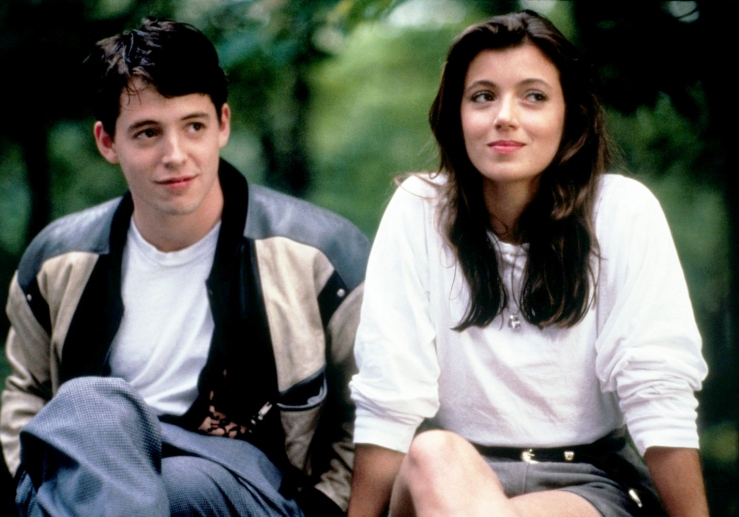
And this brings us back to Claire Elizabeth Beauchamp Randall Fraser, brilliantly played by Caitriona Balfe on the STARZ series Outlander. If for some reason you’ve stumbled across this blog having never seen Outlander, do yourself a favor and start. Right now.

The show, adapted from Diana Gabaldon’s spectacular series of novels, just finished its third season and is currently filming its fourth. And, although Outlander fans hail from multiple countries, from every state, and span every age, political affiliation, and ethnicity, they skew most decidedly female. They are a passionate bunch, engaging in cosplay, conventions, and other fandom. As a fan of the show myself it’s easy to see why: Outlander is one of most authentic examples women and female relationships on television or film.

The premise of the show is thus: Claire, a married wartime nurse, has just come off the front lines of WWII when she accidentally time travels to the year 1743. Adventure, loss and, yes, love await her as she navigates her life between the eighteenth and twentieth centuries.
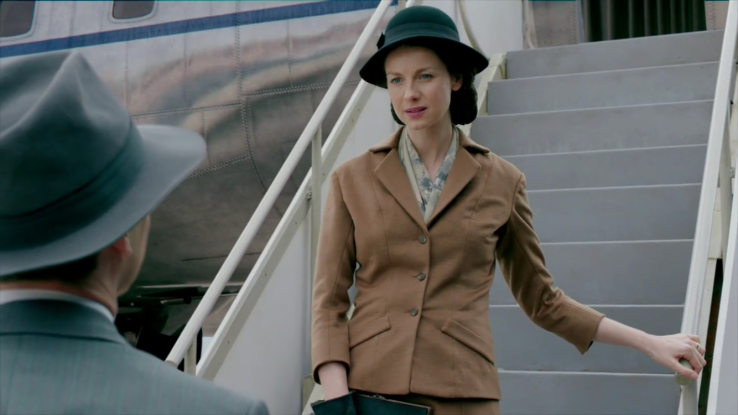
The show, often narrated and most often shown from Claire’s point of view, does not seek to define women in terms of what lessons they can teach men. And although this happens naturally in the course of storytelling (men in relationships should learn lessons from their wives or partners), this is very much Claire’s story.
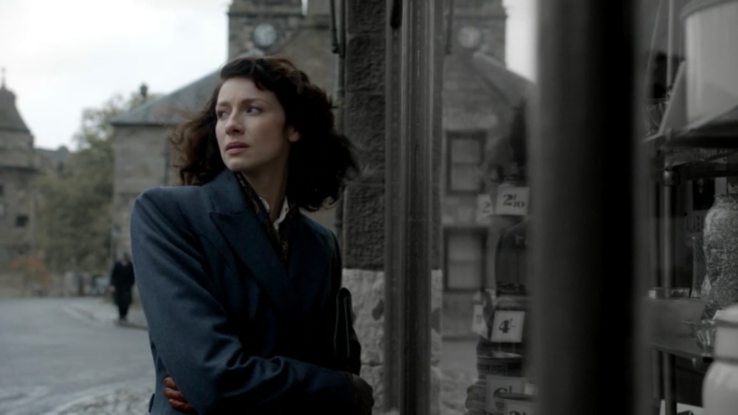
The basis of the show is time-travel but the show is otherwise grounded in reality. The contrast between Claire Fraser and the manic pixies or cool girls is clear: Claire is not a woman solely defined by her men. She loves them passionately (in many instances risking her life in the name of love), but she is an equal partner in both her marriages; she does not exist only to help define the male characters.
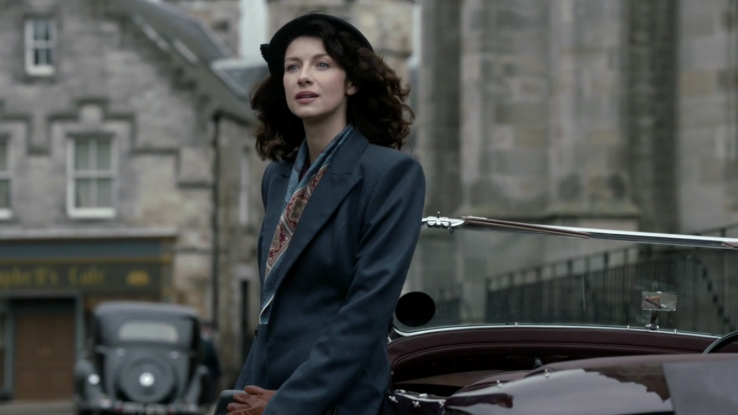
When we meet Claire in the series premiere, she is already a grown and fully conceptualized woman who has seen the horrors of war. She is brave, smart, grounded, and extremely capable. She is not tolerant of dishonesty or patronizing behavior.
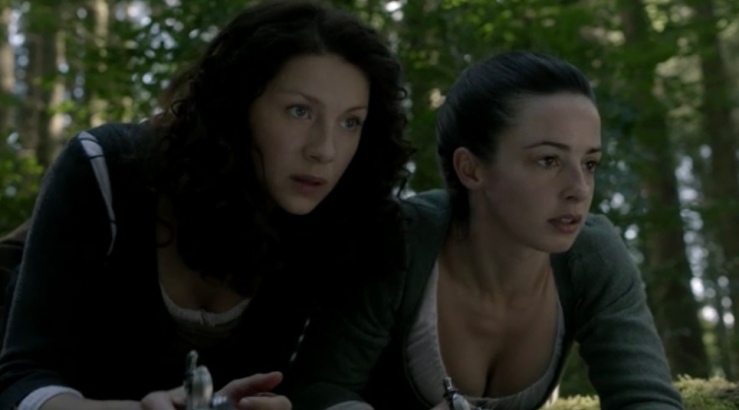
Claire’s closest female friend- Jenny Murray- is also her sister-in-law. As a no-nonsense, pragmatic woman Jenny commands attention simply by being smart and forthright. These are not girls engaging in silly games with one another. These are women. Complicated women who discuss their feelings, help one another, and are honest when the other has hurt them. Like Claire’s marriages, this friendship is full of integrity.
Beyond female friendship, Outlander does not flinch from other truthful portrayals of female life: sex, pregnancy, childbirth, infant loss, the postpartum experience, etc. Storylines are candid and sincere, without the usual sit-com jokiness that typically accompanies such topics.
Season Three begins with Claire older, the story having aged her to fifty years- an almost unheard of age for a lead female protagonist in a series, especially one that is still shown to be a desirable and sexually active woman. Claire carries the gravitas of a woman who has had a fulfilling career and has endured loss, heartache, and motherhood.
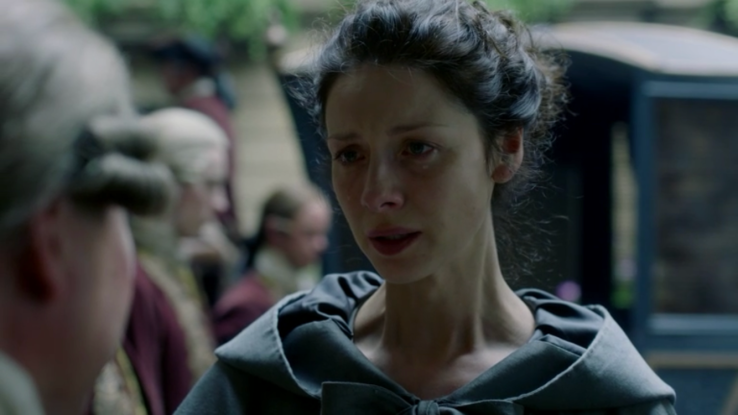
And this brings us to Caitriona Balfe, the woman behind this stunning and honest portrayal. Balfe, an Irish actress, has brought so many layers to Claire and is a marvel to watch. I truly believe the success of the series is due in very large part to her talents (and credit must also be given to her enormously gifted co-star, Sam Heughan, who was wrongfully passed over for a nomination tonight). How Balfe is able to emote grief, fear, understanding, and joy— usually all within one episode— is a wonder to me and a truly awesome feat. The category this year has some tough competition, but Balfe is so incredibly deserving of recognition for her work; anyone who has watched even half an episode of Outlander would have to agree.

I will be disappointed if she doesn’t win but buoyed by the knowledge that there is a show on television with which women can so readily identify. Thank you, Caitriona Balfe and the whole Outlander team, for another amazing year and for what you’re doing for women in entertainment. May this trend continue and may you be rewarded for your efforts.

Slàinte

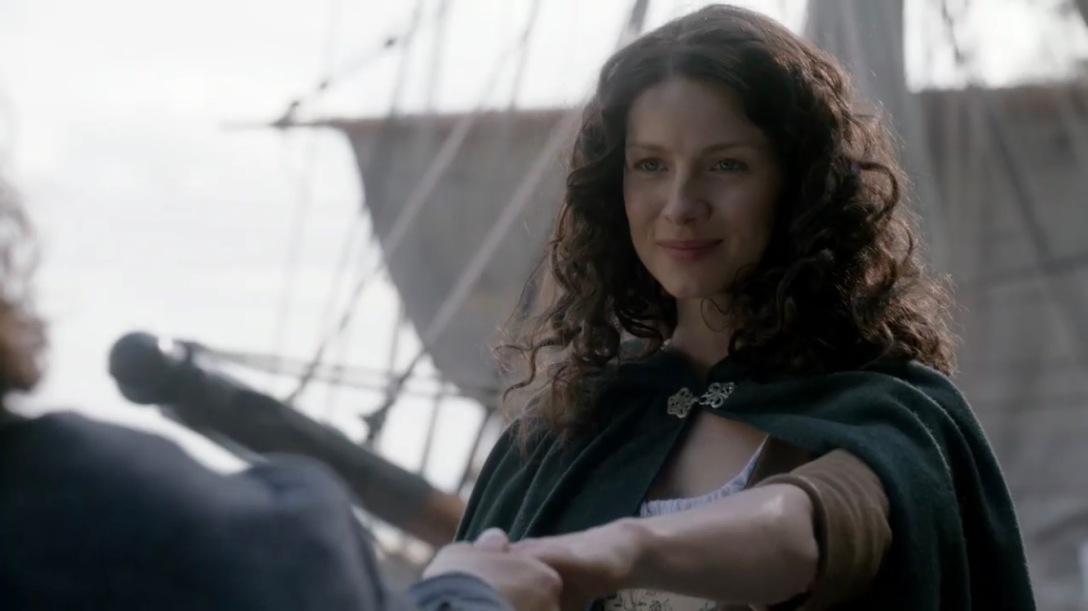

















Beautifully written – I totally agree. Love the story and acting of Outlander.
LikeLike
Very concise and correct. Reese Weatherspoon has heard our call and is bringing strong women roles to the screen. She herself is tired of reading typical Hollywood scripts where the woman lead always says somewhere “what do we do now?” To the male lead. Ever since I heard her speech, I’ve noticed almost every action movie has that phrase in there…we need more Outlander!
LikeLike
She’s been a wonderful driving force for women and I have a ton of respect for her projects and acting. Outlander has been great at giving female characters their own agency and intelligence— I will always support the call for more Outlander!
LikeLike
[…] leads- Sam Heughan and Caitriona Balfe- have yet to be nominated for an Emmy in their categories. I argued a few months ago that Balfe was deserving of a Golden Globe win, in large part due to the phenomenal way Outlander […]
LikeLike
[…] the women of Outlander are not. Strong women abound in this story, a topic I’ve addressed before here and here. Claire, Jenny, Brianna, and Marsali are all fully actualized and complex characters that […]
LikeLike
Claire and Jamie only age 20 years and are both in their 40’s in the third season.
LikeLike
Hi! Thanks for reading! Claire was born October 20, 1918 and she time travels back in Season 3 right after Christmas 1968, so I calculated that she is 50. Jamie is 45.
LikeLike